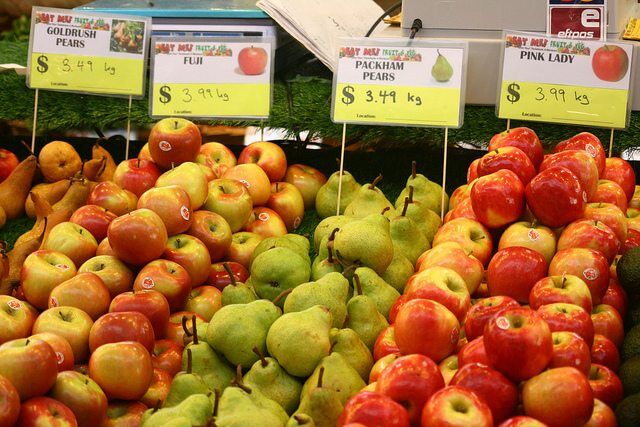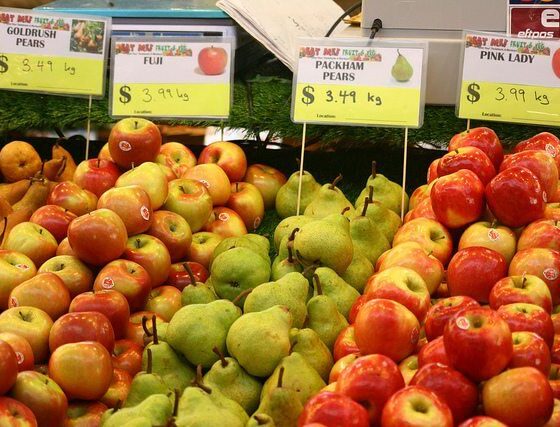

Energy
Half A Million Lives Could Be Saved By Taxing Food Emissions
According to a new study published in Nature Climate Change, taxing greenhouse gas emissions from food production could save more emissions than are currently generated by global aviation, and save half a million lives from chronic diseases.
The study, conducted by a team of researchers from the Oxford Martin Programme on the Future of Food at the University of Oxford and the International Food Policy Research Institute in Washington DC, is the first global analysis to estimate the impacts that levying emissions prices on food could have on greenhouse gas emissions and human health.
The findings show that about one billion tonnes of greenhouse gas emissions could be avoided in the year 2020 if emissions pricing of foods were to be implemented, more than the total current emissions from global aviation. However, the authors stress that due consideration would need to be given to ensuring such policies did not impact negatively on low income populations.
“Emissions pricing of foods would generate a much needed contribution of the food system to reducing the impacts of global climate change,” said Dr Marco Springmann of the Oxford Martin Programme on the Future of Food, who led the study. “We hope that’s something policymakers gathering this week at the Marrakech climate conference will take note of.”
If you’d have to pay 40% more for your steak, you might choose to have it once a week instead of twice
Much of the emissions reduction would stem from higher prices and lower consumption of animal products, as their emissions are particularly high. The researchers found that beef would have to be 40% more expensive globally to pay for the climate damage caused by its production. The price of milk and other meats would need to increase by up to 20%, and the price of vegetable oils would also increase significantly. The researchers estimate that such price increases would result in around 10% lower consumption of food items that are high in emissions. “If you’d have to pay 40% more for your steak, you might choose to have it once a week instead of twice,” said Dr Springmann.
The research team modelled the emissions generated by the production of different foods, the climate damages that those emissions are expected to cause, changes in consumption that would result from including the cost of climate damage in the price of foods, and changes in the likelihood of dying from diet-related chronic diseases such as type 2 diabetes, coronary heart disease, stroke and cancer. They then compared different pricing schemes, including one in which all food prices were adjusted to include food-specific emissions taxes, and one in which the tax revenues were used to compensate consumers for higher food prices and to subsidise fruit and vegetable consumption.
“Food prices are a sensitive topic,” said Dr Springmann. “We approached the design of climate policies for the food and agriculture system from a health perspective to find out whether the emissions of food production could be priced without putting peoples’ health at risk.”
The results indicate that the emissions pricing of foods could, if appropriately designed, be a health-promoting climate-change mitigation policy in high-income, middle-income, and most low-income countries. Special policy attention would be needed in those low-income countries where a high fraction of the population is underweight, and possibly for low-income segments within countries.
Pure emissions pricing without any compensation would result in positive net health benefits globally, but some countries, in particular in Sub-Saharan Africa and South-East Asia, could be negatively affected due to reductions in food availability and the consequent increase in underweight-related deaths. But pairing emissions pricing with income compensation, or with subsidies for fruit and vegetables would result in net positive health impacts in all 150 countries included in the study. The benefits amount to about half a million lives saved per year in 2020 due to lower consumption of red meat, increased consumption of fruits and vegetables, and a decrease in the number of people who are overweight or obese, which exceed the changes in underweight-related impacts.
“So far, food production and consumption have been excluded from climate policies, in part due to concerns about the potential impact on food security,” said Dr Springmann. “Here we show that pricing foods according to their climate impacts could not only lead to lower emissions, but also to healthier diets in almost all countries around the world.”


 Environment10 months ago
Environment10 months agoAre Polymer Banknotes: an Eco-Friendly Trend or a Groundswell?

 Environment11 months ago
Environment11 months agoEco-Friendly Home Improvements: Top 7 Upgrades for 2025

 Features9 months ago
Features9 months agoEco-Friendly Cryptocurrencies: Sustainable Investment Choices

 Features10 months ago
Features10 months agoEco-Friendly Crypto Traders Must Find the Right Exchange





























